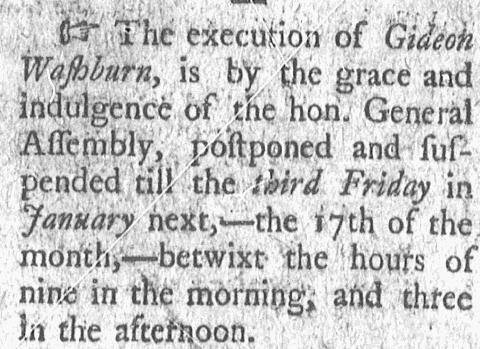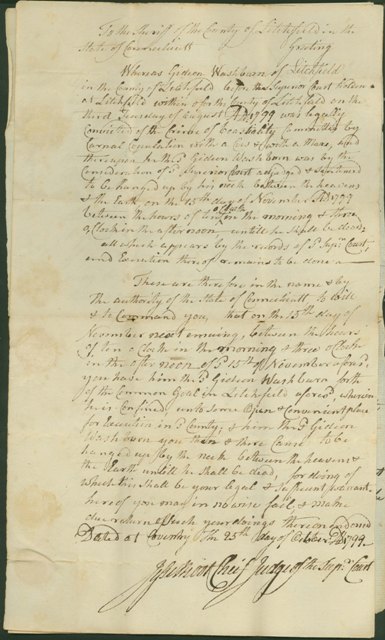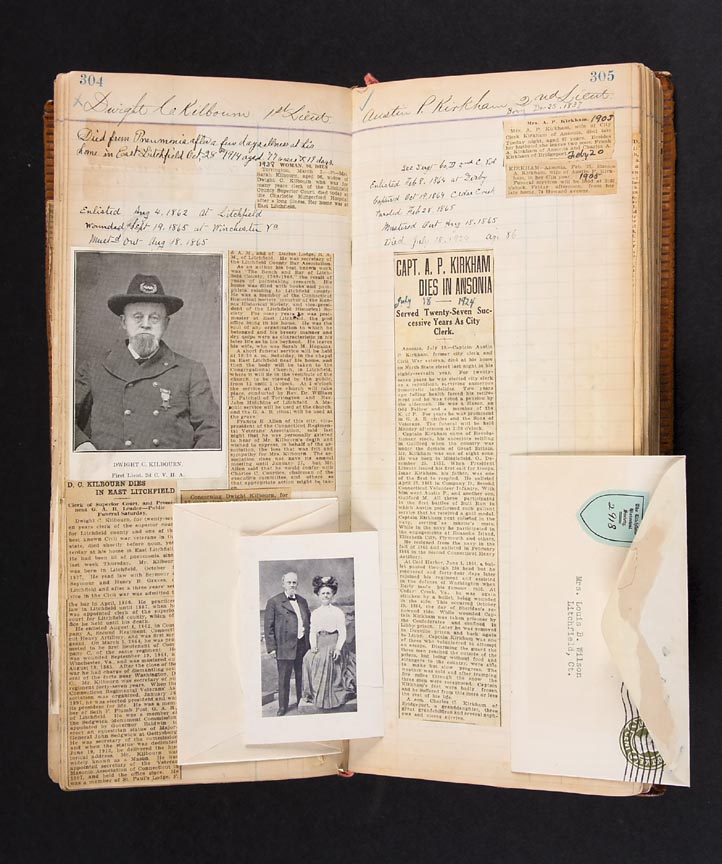For those of you not in the know, October is American Archives Month. It’s time to celebrate the value of historic records. Every week this month, I will post tidbits from the Historical Society’s Helga J. Ingraham Memorial Library. If you have requests for specific topics, please let me know.
The Society is fortunate to have a small conservation fund, and every so often we are able to have a few things treated. Last week three letters written by Augustus Cincinnatus Hand were returned by the conservator who was treating them. Hand was a student at the Litchfield Law School between 1827-1828. He came to Litchfield from Vermont, and settled in New York after completing his course of study. He served in the United States Congress from 1839-1841. He later became a State Senator in 1844 followed by the position of Associate Judge of the Supreme Court (NY) 1847-1855. The home he built in 1849 in Elizabethtown, NY is part of the Hand-Hale Historic District. His three sons became lawyers, and two of his grandsons became U.S. Circuit Court judges.
Here are a few things he had to say:
Letter to his father, Samuel Hand, 1827 Nov 12
In the morning I called upon & introduced myself to his honor Judge Gould being ushered into the presence of an old grey headed sinner of between 50 & 60 who received me with the greatest cordiality took & interest in my affairs introduced me to his wife (who did the same by procuring me a washer woman sent his son to reconnoitre the boarding houses etc. etc.
In explaining his boarding situation to his father (the students often roomed in one house and boarded in another), Hand says of his host:
E. Harrison Esquire Town Clerk Litchfield is the gentleman_ The only house under 2.75_ Our table is set for Mr. & Mrs. H. _ A Doctor_ A Lawyer_ Editor & fellow student who has been here about a year_ The only mar to our society is that I am unfortunately the only Jacksonian in the family all besides being warm Adamsites_
He goes on to say,
This is indeed the place for Law_ It is all Law_
The following January, Hand wrote to his father again. This time he had a different motivation than reporting on his arrival. He says,
My dear Father_
I set down to write you a long letter I hope a good one_ But as Shakespeare says, “there is a rub” & this shall come first that when it is disposed of you may read the other part with better appetite_ is to say My dear father I have no notion of giving you a ‘pill’ in molasses but the pill & then the molasses. “Tis about cash!”
Without letters like this, we would not have such a good idea of what Litchfield looked like during the early republic, or what a law student experienced upon arriving here. Hand gives further explanations of the costs involved in attending the school, the actual work involved, and the personalities in town at the time.
Thanks to the Web site findagrave.com, I can tell you the inscription on Hand’s tomb:
Here rests all that is mortal of Augustus C. Hand, born September 4, 1803, died March 8, 1878. A learned lawyer, a faithful representative of the people in state and nation, a just judge, a blameless citizen, a loving husband and father.
The Hand letters are part of the Litchfield Law School Collection. Check out the finding aid to learn about related documents in our collection.


